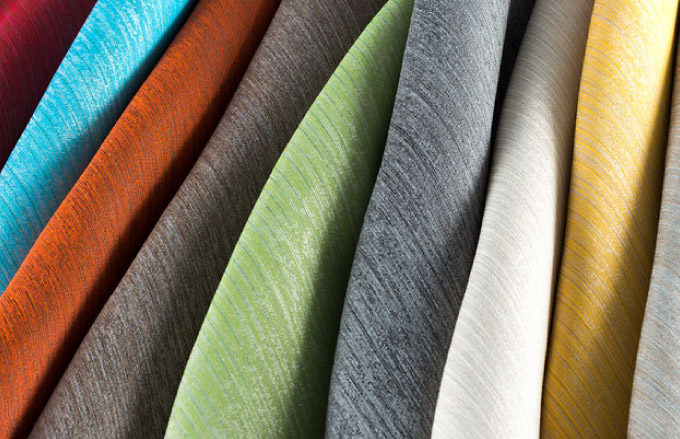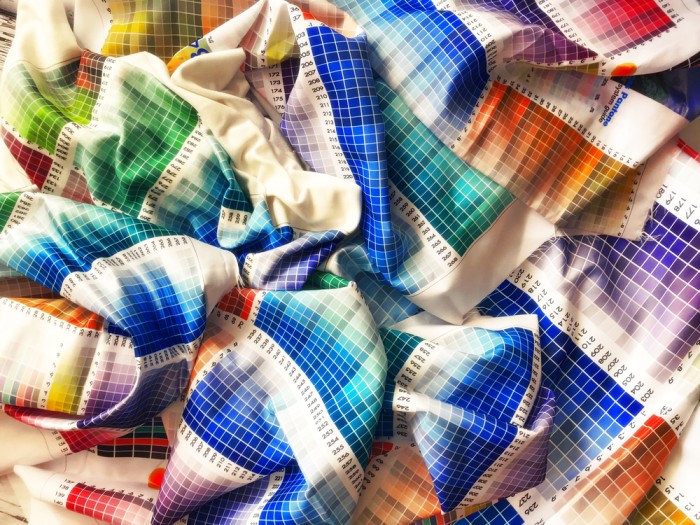How To Go About Textile Printing: Guide For Fashion Brands



What is textile printing?
Textile printing is the concept of printing designs, words, or any other pattern on a fabric. There are numerous ways to do it, and with technological advancement, there are many options available for the brands of today. However, the industry still relies on age-old methods with an upscaled version for incredible results. Consumers are looking for lost artistry and are open to trying anything with a modern twist.
What is the method of textile printing?

The first step of textile printing starts with preparing the fabric on which the patterns are to be copied. This involves rigorously cleaning the fabric to remove any dust particles before the printing process can commence. After this, the fabric is smoothed out and adjusted between the panels to make an effortless transition and copying.
Many printing firms have high-level machines, while local artisans still use old techniques to achieve the best results. Depending on the machinery and process used, the fabric is laid out on a flat sheet or loaded in rollers.
After the fabric is laid out and free of impurities, the colours are mixed and prepared. The colouring and designing are done with the help of stencils, and thus this step is extensively crucial. There are numerous other steps involved along with colour, including the usage of thickening agents, starch paste, gum, etc.
Textile Printing is nothing short of an art, and this art can be carried out via various methods. Let us look at the most popular methods used in textile printing and what kind of fabrics are the best fit for each technique.
Various methods of textile printing
There are dozens of methods for printing textiles. Fashion designers choose the fabric depending on the technique used to print these textiles to create beautiful garments. Thus, understanding the available forms of textile printing is one of the most crucial steps before finalising the launch of a clothing line.
Here is the list of some methods that are used in textile printing:
- Hand Block Printing
Hand block printing is an old method where a block made of either wood or rubber is dipped in colour and is pressed on the fabric. This is done many times, and thus a unique pattern takes shape on the textile. It is mainly used by artisans with a generational business, using the same method to achieve an expected outcome.
- Stencil Printing
Stencils are patterns that are cut out of a hard material used on the cloth, followed by filling the empty spaces with colours to achieve the desired pattern. These stencils can be used repeatedly to print the fabric without worrying about messing up the design.
- Screen Printing
Screen printing is one of the most time-taking methods because of how intricately the colours are transferred on the fabric one after the other during this technique. This type of textile printing is ideal for simple designs, so geometric shapes, primary linings, etc., can be done with ease. If more intricate patterns are needed, screen printing might not be ideal for a fashion brand. So, screen printing is a perfect choice if the requirement is huge and needs limited input in terms of designs and colours.
- Digital Textile Printing
Digital Printing has changed the face of the textile printing industry because of the comfort it provides. Imagine sitting comfortably and letting the printer give perfect replicas and contours of the selected design. This is what can be achieved with the help of digital textile printing. The method is ideal for designs that require detailed work, portraits, or copying other intricate patterns on the textile. Digital Printing is perfect for brands looking for a method that leaves no waste, thus leading to a sustainable process of printing fabrics.
- DTG or Direct to Garment Printing
Direct to garment/clothing is replicating the pattern directly on the final clothing product. This method is mainly used for end-products like bags, t-shirts, or sweatshirts. The significant advantage of this type of printing is reducing preparation like screens, which saves time and cost. With direct to garment printing, the brands get the finished product with a specific pattern placed in a pre-decided place with certain limitations to the colour palettes.
- Roll-to-Roll Printing
Roll to roll printing is ideal for those designers who want to use the printed fabric according to their storyline, vision, and idea. The design is transferred on a clean fabric on every corner in this method. This gives more room for the designers to use the fabric more independently, cutting and sewing the fabric as per their idea and requirement for the launch.
There are some other methods of textile printing, too, which include but are not limited to Perrotine Printing, Engraved Copperplate Printing, Discharge Printing, and Resist Printing, among others. The end-product and fabric requirements determine which kind of printing will be ideal for a clothing range.
Understand the inks

Apart from the various printing methods, it is essential to learn a bit about the inks to be used on the fabric. Below-mentioned is the types of inks that are used in the textile printing process with the help of the methods mentioned above:
- Pigment Ink
Pigment Ink can be used on almost all kinds of fabrics, including cotton, rayon, and polyester. The fabric needs to be appropriately treated before the ink is used so that the cloth holds its value for a longer time. Pigment ink works well with lighter shades for a better and long-lasting effect.
- Sublimation Ink
This is a unique process in which the material is passed through various mediums for getting the desired output. Sublimation ink is used in the heating phase, during which the dye gets attached to the material when the temperature is set at a particular limit for best results. This ink is used explicitly for fabrics like polyester.
- Dyes
There are two types of dyes: reactive and acid. By using dyes, printing on fabrics becomes easy that is not otherwise suitable for other printing methods like digital printing. The quality and brightness of the colours used on the fabric are uplifted, so fashion brands highly prefer dyes.
Every ink has a special feature and unique point that helps the clothes outshine. Combining the different techniques with the specific ink for a clothing line needs a bit of understanding and research to attain the best results.
After this is done, a clothing brand needs to solve other questions as well, like how to choose the best method that yields the desired result. Continue reading to find some other aspects that need to be considered before sourcing a textile printing service.
Some more aspects to consider
With so many options to choose from, confusion is bound to happen. So what is the best textile printing method? Well, the answer is hidden in what the requirement is. Here are a few things to consider before finalising the proper printing method by any brand.
- Choose the right fabric.
There needs to be a thorough understanding of which fabric goes with which type of ink and printing method. Specific methods work best for a set of fabrics, while others don't yield the same results. So, before deciding on anything, it is good to understand the fabric and printing methods in detail.
- Patterns
The patterns that will be replicated on the fabric are essential to note. Textile printing companies have patterns that they use for different brands. However, some fashion brands provide their designs to attain authenticity. In these cases, it is important to be thorough with who can use the design and repurpose it at a later stage.
- Quality and Concerns
Every printing method comes with its dos and don'ts. Thus, when brands choose their method, they should be thorough with the limitations and how to retain the quality of the product for a longer time. There should be clear instructions for the product so that the consumer feels satisfied with the end product.
Sourcing fabric and finding the right textile printer can be a bit of a hassle. There are a lot of things to keep in mind. However, these things can be sorted with a bit of external help.
We help fashion brands source suitable materials for a clothing range. We partner with hundreds of manufacturers who use various printing technologies that can be ideal for any brand looking forward to launching some new products. Find the right supplier with our transparent and effortless process. Contact team Fashinza now.



















